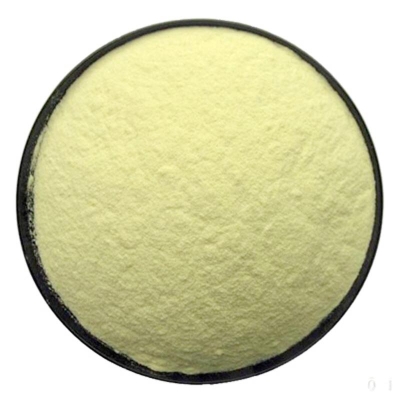-
Categories
-
Pharmaceutical Intermediates
-
Active Pharmaceutical Ingredients
-
Food Additives
- Industrial Coatings
- Agrochemicals
- Dyes and Pigments
- Surfactant
- Flavors and Fragrances
- Chemical Reagents
- Catalyst and Auxiliary
- Natural Products
- Inorganic Chemistry
-
Organic Chemistry
-
Biochemical Engineering
- Analytical Chemistry
- Cosmetic Ingredient
-
Pharmaceutical Intermediates
Promotion
ECHEMI Mall
Wholesale
Weekly Price
Exhibition
News
-
Trade Service
Introduction
Baijiu is a traditional distilled liquor in China, which can be divided into twelve aroma types
, such as sauce aroma type, strong aroma type, clear aroma type, rice aroma type, sesame aroma type, etc.
according to the aroma characteristics.
Among them, sesame aroma liquor is a newly established aroma type after the founding of the People's Republic of China and has a unique aroma of roasted sesame, which is particularly popular
in the northern region of China.
According to GB/T 20824-2007, sesame-flavored liquor is made of sorghum, wheat (bran), etc.
as raw materials, and is fermented, distilled, aged, stored and blended by traditional solid-state fermentation method, without adding edible alcohol and other aromatic substances produced by non-liquor fermentation, which has the typical style of
sesame-flavored liquor.
At present, the research on sesame-flavored liquor mostly focuses on the research of volatile compounds or key compounds, and there are relatively few
studies on different grades of sesame-flavored liquor.
The study of the difference in flavor of different grades of sesame-flavored liquor is helpful to better analyze sesame-flavored liquor, which is of great significance
to the improvement of the aroma and quality of sesame-flavored liquor.
Dr.
Qin Dan, School of Biosystems Engineering and Food Science, Zhejiang University, and Li Hehe, assistant researcher of the School of Light Industry Science and Technology, Beijing Technology and Business University, compared the flavor differences
of different grades of sesame-flavored liquor by molecular sensory science combined with modern instrumental analysis.
Results and discussion
A total of 61 aroma active regions were identified from three wine samples by HS-SPME combined with GC-O-MS, and 54 aromaactive compounds
were identified by mass spectrometry, retention index and aroma quasi-certainty.
The aroma intensity of different grades of sesame-flavored liquor has certain differences, and the aroma intensity comparison is shown
in Figure 1.
Among them, excellent wine (JZ1) contains the largest number of compounds with the highest aroma intensity (S=4), furfuryl mercaptan (roasted sesame aroma), dimethyl trisulfide (cabbage), ethyl 2-methylpropanoate (fruity), ethyl valerate (apple), ethyl 3-phenylpropionate (floral), ethyl caproate (fruity), 3-methylbutyraldehyde (malt), β-marone (honey), butyric acid (rancidity), caproic acid (rancidity) have the highest aroma intensity in JZ14; Ethyl butyrate (pineapple), ethyl caproate (fruity), phenylacetaldehyde (grass), 3-methylbutyraldehyde (malt), β-marone (honey), caproic acid (rancidity) have the highest aroma intensity among first-class wines (JZ2)4; Furfuryl mercaptan (roasted sesame aroma) has the highest aroma intensity among secondary liquor (JZ3)4
.
(A,B) JZ2; (C) JZ1; (D) JZ3
。
Fig.
1 Total ion flow diagram represented by JZ2 and comparative diagram of aroma intensity of three different grades of sesame-flavored liquor
Quantification of volatile compounds in 3 different grades of sesame-flavored liquor
The volatile compounds in three different grades of sesame-flavored liquor were quantitatively analyzed, among which esters had the highest concentration, followed by acids and alcohols
.
The statistical analysis results showed that 10 compounds including ethyl butyrate, ethyl valerate, ethyl caproate, and caproic acid had significant differences (P < 0.
05), which may play an important role
in distinguishing different grades of sesame-flavored liquor.
The above results also show that the concentration of different compounds and the different concentration ratios of various compounds in the samples play an important role
in the formation of different grades of sesame-flavored liquor.
From the PCA results,
it can be seen that 3 different grades of sesame-flavored liquor can be clearly distinguished.
Furfuryl mercaptan concentration is low and cannot be quantified by GC-MS, but it has high aroma intensity (S≥ 3.
7) in three different grades of sesame-flavored liquor, which makes an important contribution
to sesame-flavored liquor.
It was accurately quantified
by full two-dimensional gas chromatography combined with sulfur-containing chemiluminescence detector (GC×GC-SCD) and internal standard curve method.
The quantitative results showed that the compound had the highest concentration of 22.
43±0.
83 μg/L in JZ1, followed by JZ2 18.
88±0.
20 μg/L and JZ3 16.
29±0.
07 μg/L
.
The threshold value of furfuryl mercaptan was 0.
1 μg/L, and the OAV value of furfuryl mercaptan in the three wine samples was calculated to be > 100
.
Fig.
3 Analysis of PCA results of different grades of sesame-flavored liquor
of three different grades of sesame-flavored liquor.
The statistical analysis results showed that roasting aroma was significantly different among the three wine samples, and other descriptors were not significant
.
As shown in Figure 4, compared to JZ2 and JZ3, JZ1 has the highest roasted, fruity and sweet aromas, where the higher fruity and floral aromas are consistent with
the higher ester concentration and aroma intensity of the previous JZ1.
At the same time, JZ1 has the most significant roasting aroma, which may be an important feature
of JZ1 to become a premium wine.
Compared to the other 2 samples, JZ2 has the highest floral aroma and JZ3 has the highest grain, sourness and sulfur aroma.
The differences in the sensory properties of the three different grades of sesame-flavored liquor are shown in Figure 4
.
Figure 4 Comparison of aroma properties in three different grades of sesame-flavored liquor
Conclusion
In three different grades of sesame-flavored liquor, a total of 61 aroma active zones
were identified.
High-quality liquor JZ1 has the highest
aroma intensity and concentration.
There were significant differences in aroma intensity of dimethyltrisulphie, butyric acid, phenylacetaldehyde and nonanoic acid in the three liquor samples (P<0.
05).
The concentrations of 2-furanethiol, ethyl butyrate, ethyl valerate, ethyl hexanoate, hexanol, n-butyric acid, valeric acid, caproic acid, 2,6-dimethylpyrazine, furfural and ethyl 2-furanoate were significantly different (P<0.
05
).
Therefore, the above compounds play an important role
in distinguishing 3 different grades of sesame-flavored liquor.
Sensory evaluation showed that JZ1 had outstanding baking aroma intensity
than JZ2 and JZ3.
2-Furanmethanethiol and 2,6-dimethylpyrazine are associated with baking aroma, and they may contribute significantly to
the differences in 3 different grades of sesame flavored liquor.
Understanding the different grades of sesame-flavored liquor can help improve its characteristic aroma and increase the yield
of high-quality liquor.
Therefore, further research in this field will focus on the verification of key aroma compounds, odor precursors and formation pathways in sesame-flavored liquor, so as to provide a theoretical basis
for the aroma and flavor regulation of sesame-flavored liquor.
First author bio
Qin Dan, female, PhD candidate, School of Biosystems Engineering and Food Science, Zhejiang University, specializing in flavor chemistryof liquor.
At present, he has published 7 academic papers, including 3 SCI papers and 2
EI papers as the first author (or supervisor and first author).
Participated in 2 national projects and 2 enterprise horizontal projects
.
About the corresponding author
at the Department of Brewing Engineering, School of Light Industry Science and Technology, Beijing Technology and Business University.
National liquor evaluation committee, member of
the National Liquor Standardization Technical Committee.
Mainly engaged in the research
of wine flavor chemistry, sensory science, and the authenticity traceability of liquor.
In the past 5 years, he has presided over 2 National Natural Science Foundation of China and 3 enterprise horizontal projects; Participated in 5 national projects and 4 provincial and ministerial projects
.
He has published more than 20 academic papers as the first author or corresponding author, and 1 highly cited paper; 3 authorized patents; Participated in the formulation of
one national standard.
Won the Science and Technology Innovation Award of the Chinese Society of Food Science and Technology - 1 second prize of excellent paper; Participated in the compilation of the popular science book "National Wine" and won the first prize of the 2020 China Petroleum and Chemical Industry Excellent Publication Award and Book Award
.
Characterization and comparison of the aroma-active compounds on different grades of sesame-flavor Baijiu by headspace solid-phase microextraction and gas chromatography-olfactometry-mass spectrometry
Dan Qina,b, Jiawen Duanc, Hehe Lib,c,*, Fuping Zhengb,c, Huan Chenga, Xingqian Yea,*, Baoguo Sunb,c
a College of Biosystems Engineering and Food Science, Zhejiang Key Laboratory for Agro-food Processing, Fuli Institute of Food Science, Zhejiang University, Hangzhou 310058, China
b Beijing Laboratory for Food Quality and Safety, Beijing Technology and Business University, Beijing 100048, China
c Key Laboratory of Brewing Molecular Engineering of China Light Industry, Beijing Technology and Business University, Beijing 100048, China
*Corresponding author.
E-mail address: xyzhehe@126.
com; psu@zju.
edu.
cn
This study investigated the aroma-active compounds and compared the differences of three different grades of sesame-flavor Baijiu by headspace solid-phase microextraction (HS-SPME) coupled with gas chromatography-olfactometry-mass spectrometry (GC-O-MS).
A total of 54 aroma-active compounds were detected.
Principal component analysis showed that JZ1, JZ2, and JZ3 were well separated from each other.
JZ1 as the premium-grade Baijiu had the highest aroma intensities, concentrations.
According to aroma intensities and concentrations, dimethyl trisulfide, butanoic acid, phenylacetaldehyde, 2-furylmethanethiol, ethyl hexanoate, 2,6-dimethylpyrazine, etc.
could be potentially applied as volatile makers to distinguish the three different grades of sesame-flavor Baijiu as their significant difference (P < 0.
05) in three Baijiu samples.
Roasted aroma had the significant difference (P < 0.
05) in three sample base on aroma profiles.
Meanwhile, 2-furylmethanethiol, 2,6-dimethylpyrazine were related to the roasted aroma, they may be had a significant contribution to the differences of three different grades of sesame-flavor Baijiu.
This study has provided a comprehensive understanding of the differences of three different grades of sesame-flavor Baijiu.
QIN D, DUAN J W, LI H H, et al.
Characterization and comparison of the aroma-active compounds on different grades of sesame-flavor Baijiu by headspace solid-phase microextraction and gas chromatography-olfactometry-mass spectrometry[J].
Food Science and Human Wellness, 2023, 12(1): 79-88.
DOI:10.
1016/j.
fshw.
2022.
07.
025.
Article compilation content is provided by the author
Editor: Wang Jiahong; Responsible editor: Zhang Ruimei
Past is wonderful
FSHW | Formation mechanism of ethyl acetate and organic acids in fermentation of rice acid by Max Kluyville yeast L1-1
FSHW | Modified atmosphere packaging roast chicken: monitoring and isolation and identification of spoilage-related microorganisms
FSHW | Comparative analysis of the physical and chemical properties, ginsenoside content and α-amylase inhibition of white ginseng and red ginseng
FSHW | The relationship between wine, beer, and Chinese liquor and cardiovascular health: the effects of moderate alcohol consumption
FSHW | The isolation of endogenous oligopeptide QGVP from strong aromatic liquor lees has the potential to lower blood pressure
FSHW | Effects of phosphopeptide calcium complex prepared by efficient enzymatic hydrolysis on calcium uptake and bone deposition in mice
FSHW | Structural requirements and mechanism of action of ACE inhibitory peptides: molecular simulation and thermodynamic study of LAPYK and its modified peptides
FSHW | Hypoglycemic and lipidemic effects of sea cucumber flower digest on hypoglycemic and hypolipidemic in rats with type II diabetes
FSHW | Inhibition of antibacterial peptide PvGBP2 on pathogenic bacteria in black fungus culture bags and its anti-biofilm activity
FSHW | Transcriptome and proteome-based revealing of the mechanism by which polypeptide lunasin inhibits the proliferation of MDA-MB-231 in breast cancer cells
FSHW | Identification of egg xanthine oxidase inhibitory peptides: virtual hydrolysis, molecular docking, and in vitro activity evaluation
FSHW | Tartary buckwheat-derived antioxidant polypeptides: mechanisms of action and structure-activity relationships in Caco-2 cell models
FSHW | Iglycin improves insulin sensitivity
FSHW | Protective effect of octapeptide derived from soy globulin on MCD diet-induced nonalcoholic fatty liver disease in mice
FSHW | ACE inhibitory activity and antihypertensive effect of rice peptide
Long press the QR code to follow FSHW!







